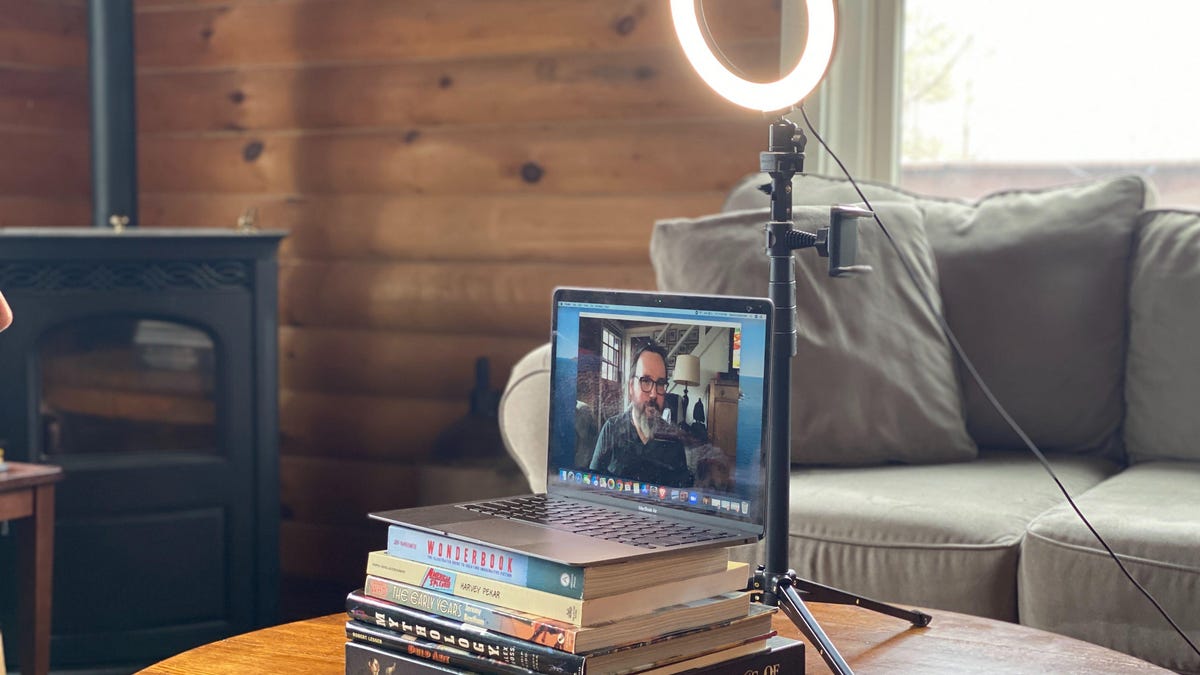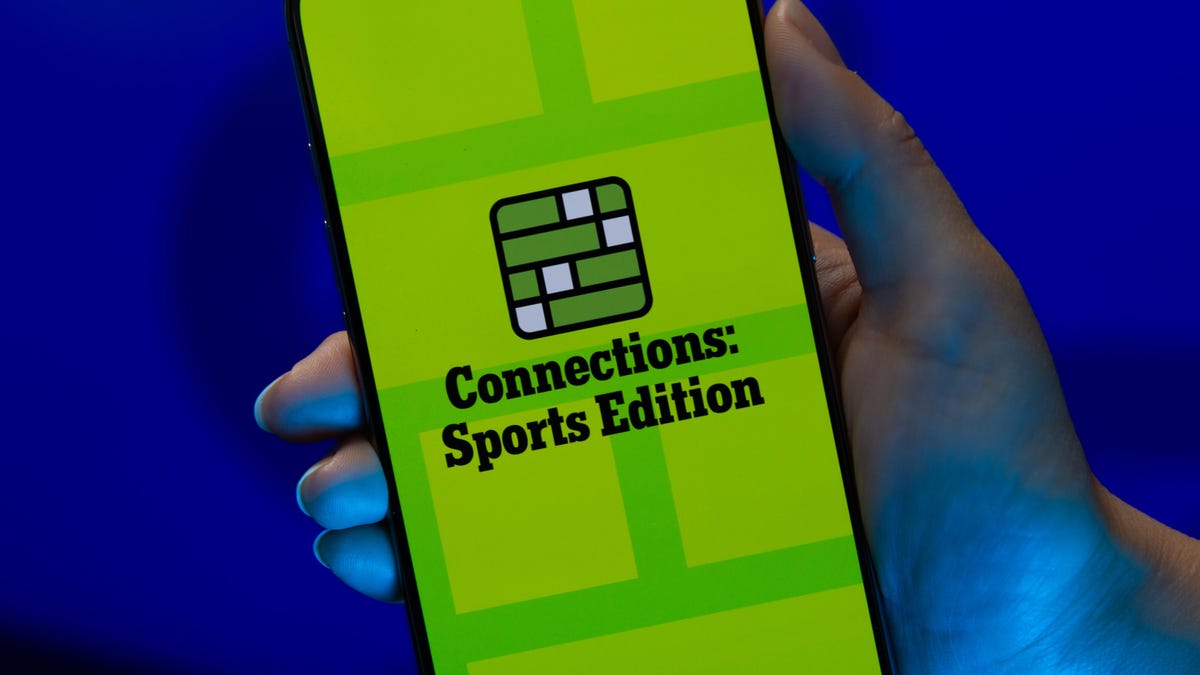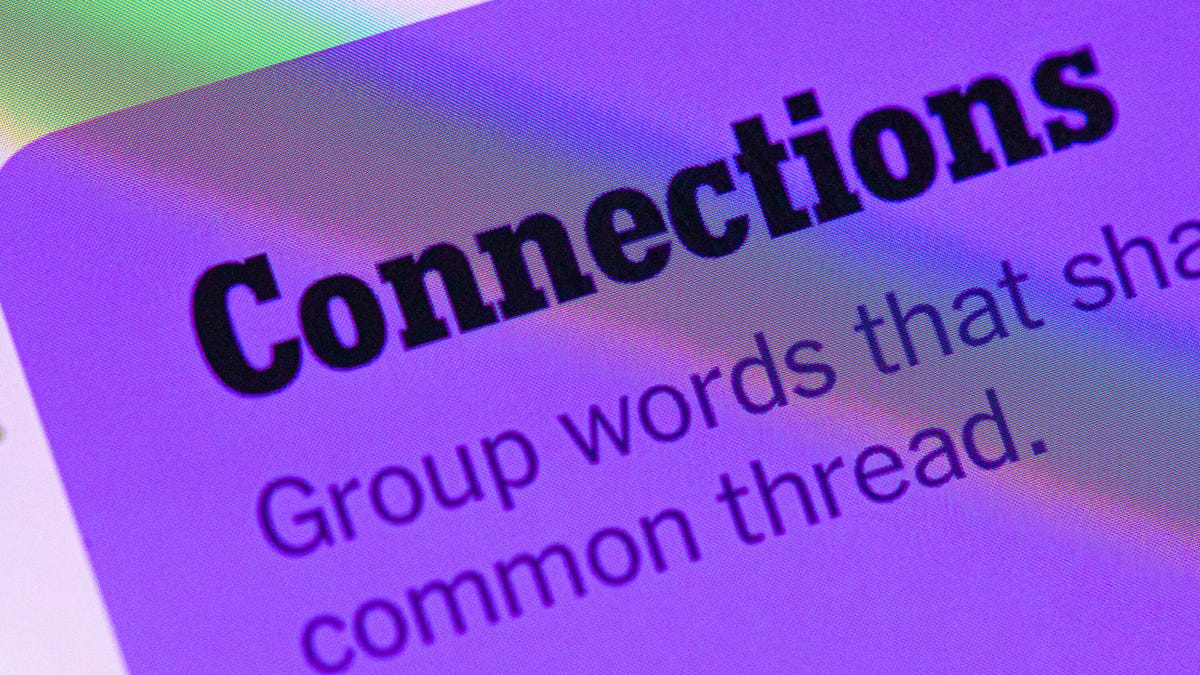Technologies
Why Your MacBook Air Webcam Looks Bad in Zoom Meetings and How to Fix It
Here are some lighting and positioning tricks to help you make up for that grainy 720p webcam on older Macs.

Almost every new MacBook sold today has an upgraded high-resolution webcam, but that only helps if you’ve bought one in the last year or so. Many MacBook owners are still using either older Intel versions or the 13-inch M1 MacBook Air or MacBook Pro, and all of those systems are held back by one unfortunate quirk: a flat-looking 720p-resolution webcam with lots of noise and a lack of depth-sensing technology.
A lot of Windows laptops are barely better, many with similar outdated webcams, but at least some have better light sensitivity, color accuracy or depth sensing for facial-recognition logins. However, many Windows laptops were even ahead of Apple in adding better 1080p webcams over the past few years.
The side effect of MacBooks being in wide circulation and tending to last for many years is that there’s a lot of older hardware out there. And that means your Zoom or other video meetings are not going to look great, both because of the camera and because many people don’t have their laptops set up to capture a decent-looking image.
Use your iPhone camera instead
There’s at least a reasonable chance you’re beaming into an online Zoom meeting (or other video meeting) from a pre-2022 MacBook Air or something similar. That means you’re not looking your best. Especially for a smaller, low-slung laptop like the Air, your camera isn’t going to be at an optimal angle if it’s sitting on your desk or kitchen table and aimed up at you.
One option is to use your phone’s camera. Either the front or back cameras will be better than any laptop you have. For TV appearances from my work-from-home office, I sometimes use my phone mounted from an eye-level tripod clip.
The latest MacOS version, called Ventura, adds a powerful new feature called Camera Continuity. Take an iPhone with iOS 16 and a MacBook with Ventura, and you can easily link them, using the phone’s superior camera as your webcam. It’s a feature that took far too many years to get, but it solves a ton of problems. Even better, it works on (some) older Intel Macs, and you can see the exact list of compatible systems here.
If you’re using your iPhone as a wireless MacBook webcam, you’ll probably want to mount it. There are commercial mounts you can buy, like this one from Belkin, or you can try 3D printing this custom version I designed.


I designed this iPhone MacBook mount for 3D printing.
Dan Ackerman/CNETBefore Camera Continuity, I’d use EpocCam software from Elgato, which ran on my phone and allowed me to use it as a wireless camera for my MacBook. The Pro version costs a few bucks, and didn’t work for every scenario, but it was a reasonable solution when using a compatible app like Zoom or Microsoft Teams. You could also attach an external webcam from Logitech or another company.
But even with a better camera, your video presence will benefit from proper position and lighting. Here are some tips based on my experience beaming into live TV spots from my MacBook during the pandemic.
Raise your laptop
If your laptop is anywhere close to a good ergonomic position for your hands, then it’s nowhere near the best spot for a Zoom meeting. Get some big books. Get some giant board game boxes. Prop that sucker up. Use big coffee table books or something else heavy, so you won’t get as much wobble. Don’t use empty cardboard boxes.
Where do you want the camera pointing? Get it to sit just above eye level.


A not-great shot from the 2020 MacBook Air webcam. Note the soft image quality, and the laptop should be propped up higher.
Dan Ackerman/CNETGood lighting cures (most) ills
Low-res webcam signals look especially bad in low-light situations. Even higher-res cameras benefit from lots of light. That’s why movie and TV sets and professional photography are flooded with giant lights. You don’t need all that, but a good source of natural sunlight is an easy and inexpensive way to drastically improve your webcam shot. Face the window, don’t put your back to it. You want the camera to see the light from the window, not the window itself.
If natural light isn’t available, don’t spend a ton on a fancy light setup. This set from UBeesize is under $35 and includes an 8-inch ring light, a tripod to mount it on and phone clip as well. Many people at CNET use this setup or something similar for remote work.
Know the Macs with a better webcam
Among current MacBooks, the M1 MacBook Air and 13-inch M2 MacBook Pro both have that old 720p webcam. But the MacBook Pro 14 and Pro 16 have excellent 1080p cameras, along with the 2021 24-inch M1 iMac and the 2022 M2 MacBook Air. Previously, you could only find that in the discontinued $5,000-and-up iMac Pro and 27-inch iMac. The M2 MacBook Air is the biggest game-changer, if you ask me, as it has an excellent 1080p webcam, and is just a great all-around laptop.
My colleague Brian Cooley has many more general webcam setup tips, including some good headset mic suggestions — although your phone headset or AirPods should be fine for anything short of a live hit on CNN.
The best laptops in every category
- Best Laptop for 2023
- Best Windows Laptops
- Best Laptop for College
- Best Laptop for High School Students
- Best Budget Laptop Under $500
- Best Dell Laptops
- Best 15-Inch Work and Gaming Laptops
- Best 2-in-1 Laptop
- Best HP Laptops
- Best Gaming Laptop
- Best Cheap Gaming Laptop Under $1,000
- Best Chromebook: 8 Chromebooks Starting at Under $300
Technologies
Today’s NYT Mini Crossword Answers for Friday, Dec. 26
Here are the answers for The New York Times Mini Crossword for Dec. 26.

Looking for the most recent Mini Crossword answer? Click here for today’s Mini Crossword hints, as well as our daily answers and hints for The New York Times Wordle, Strands, Connections and Connections: Sports Edition puzzles.
Need some help with today’s Mini Crossword? Some of the clues are tough today — I thought maybe 1-Across was referring to the Grinch, or even Oscar the Grouch, but was I ever wrong! Read on for all the answers. And if you could use some hints and guidance for daily solving, check out our Mini Crossword tips.
If you’re looking for today’s Wordle, Connections, Connections: Sports Edition and Strands answers, you can visit CNET’s NYT puzzle hints page.
Read more: Tips and Tricks for Solving The New York Times Mini Crossword
Let’s get to those Mini Crossword clues and answers.
Mini across clues and answers
1A clue: Furry and green, say
Answer: MOSSY
6A clue: State known for its potatoes
Answer: IDAHO
7A clue: Like a faithful friend
Answer: LOYAL
8A clue: Had a beverage
Answer: DRANK
9A clue: Pronoun frequently paired with «her»
Answer: SHE
Mini down clues and answers
1D clue: Not spicy, as salsa
Answer: MILD
2D clue: Reasons for wrinkled noses
Answer: ODORS
3D clue: Words from a doctor checking your tonsils
Answer: SAYAH
4D clue: Comedian Gillis
Answer: SHANE
5D clue: Part of an egg used to make hollandaise sauce
Answer: YOLK
Don’t miss any of our unbiased tech content and lab-based reviews. Add CNET as a preferred Google source.
Technologies
Today’s NYT Connections: Sports Edition Hints and Answers for Dec. 26, #459
Here are hints and the answers for the NYT Connections: Sports Edition puzzle for Dec. 26, No. 459.

Looking for the most recent regular Connections answers? Click here for today’s Connections hints, as well as our daily answers and hints for The New York Times Mini Crossword, Wordle and Strands puzzles.
Today’s Connections: Sports Edition is a tough one. That purple category once again has players looking for a different, but related, hidden word in four of the clues. If you’re struggling with today’s puzzle but still want to solve it, read on for hints and the answers.
Connections: Sports Edition is published by The Athletic, the subscription-based sports journalism site owned by The Times. It doesn’t appear in the NYT Games app, but it does in The Athletic’s own app. Or you can play it for free online.
Read more: NYT Connections: Sports Edition Puzzle Comes Out of Beta
Hints for today’s Connections: Sports Edition groups
Here are four hints for the groupings in today’s Connections: Sports Edition puzzle, ranked from the easiest yellow group to the tough (and sometimes bizarre) purple group.
Yellow group hint: Big Apple jock.
Green group hint: College football fun.
Blue group hint: On the road.
Purple group hint: Hunt down a word in other words.
Answers for today’s Connections: Sports Edition groups
Yellow group: A New York athlete.
Green group: Bowl games.
Blue group: Associated with a team road trip.
Purple group: Ends in a movement verb.
Read more: Wordle Cheat Sheet: Here Are the Most Popular Letters Used in English Words
What are today’s Connections: Sports Edition answers?
The yellow words in today’s Connections
The theme is a New York athlete. The four answers are Islander, Net, Ranger and Yankee.
The green words in today’s Connections
The theme is bowl games. The four answers are Alamo, Gator, Liberty and Pinstripe.
The blue words in today’s Connections
The theme is associated with a team road trip. The four answers are bus, flight, hotel and visiting locker room.
The purple words in today’s Connections
The theme is ends in a movement verb. The four answers are foxtrot (trot), newsprint (sprint), terrace (race) and thunderbolt (bolt).
Don’t miss any of our unbiased tech content and lab-based reviews. Add CNET as a preferred Google source.
Technologies
Today’s NYT Connections Hints, Answers and Help for Dec. 26, #929
Here are some hints and the answers for the NYT Connections puzzle for Dec. 26 #929

Looking for the most recent Connections answers? Click here for today’s Connections hints, as well as our daily answers and hints for The New York Times Mini Crossword, Wordle, Connections: Sports Edition and Strands puzzles.
Today’s NYT Connections puzzle is full of fun pop-culture references. Read on for clues and today’s Connections answers.
The Times has a Connections Bot, like the one for Wordle. Go there after you play to receive a numeric score and to have the program analyze your answers. Players who are registered with the Times Games section can now nerd out by following their progress, including the number of puzzles completed, win rate, number of times they nabbed a perfect score and their win streak.
Read more: Hints, Tips and Strategies to Help You Win at NYT Connections Every Time
Hints for today’s Connections groups
Here are four hints for the groupings in today’s Connections puzzle, ranked from the easiest yellow group to the tough (and sometimes bizarre) purple group.
Yellow group hint: Golden state cliches.
Green group hint: Funny films.
Blue group hint: Rock on.
Purple group hint: Not white.
Answers for today’s Connections groups
Yellow group: California-based character tropes.
Green group: Comedy subgenres.
Blue group: ’70s rock bands.
Purple group: Black ____.
Read more: Wordle Cheat Sheet: Here Are the Most Popular Letters Used in English Words
What are today’s Connections answers?
The yellow words in today’s Connections
The theme is California-based character tropes. The four answers are movie exec, surfer, tech bro and Valley Girl.
The green words in today’s Connections
The theme is comedy subgenres. The four answers are buddy, cringe, screwball and stoner.
The blue words in today’s Connections
The theme is ’70s rock bands. The four answers are America, Chicago, Foreigner and Journey.
The purple words in today’s Connections
The theme is black ____. The four answers are Forest, Friday, Panther and Widow.
Don’t miss any of our unbiased tech content and lab-based reviews. Add CNET as a preferred Google source.
-

 Technologies3 года ago
Technologies3 года agoTech Companies Need to Be Held Accountable for Security, Experts Say
-

 Technologies3 года ago
Technologies3 года agoBest Handheld Game Console in 2023
-

 Technologies3 года ago
Technologies3 года agoTighten Up Your VR Game With the Best Head Straps for Quest 2
-

 Technologies4 года ago
Technologies4 года agoBlack Friday 2021: The best deals on TVs, headphones, kitchenware, and more
-

 Technologies4 года ago
Technologies4 года agoVerum, Wickr and Threema: next generation secured messengers
-

 Technologies4 года ago
Technologies4 года agoGoogle to require vaccinations as Silicon Valley rethinks return-to-office policies
-

 Technologies4 года ago
Technologies4 года agoOlivia Harlan Dekker for Verum Messenger
-

 Technologies4 года ago
Technologies4 года agoiPhone 13 event: How to watch Apple’s big announcement tomorrow

